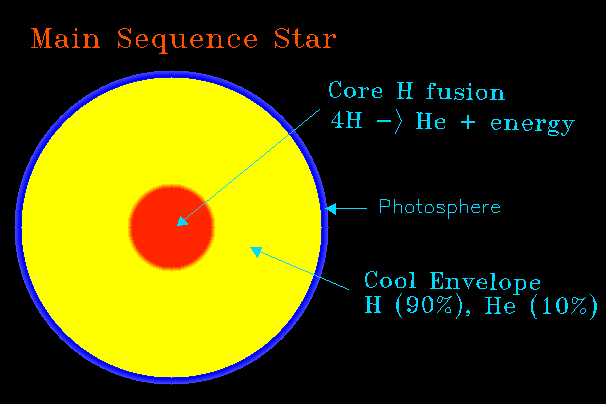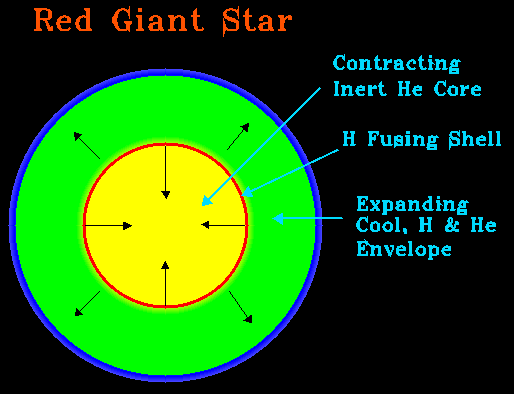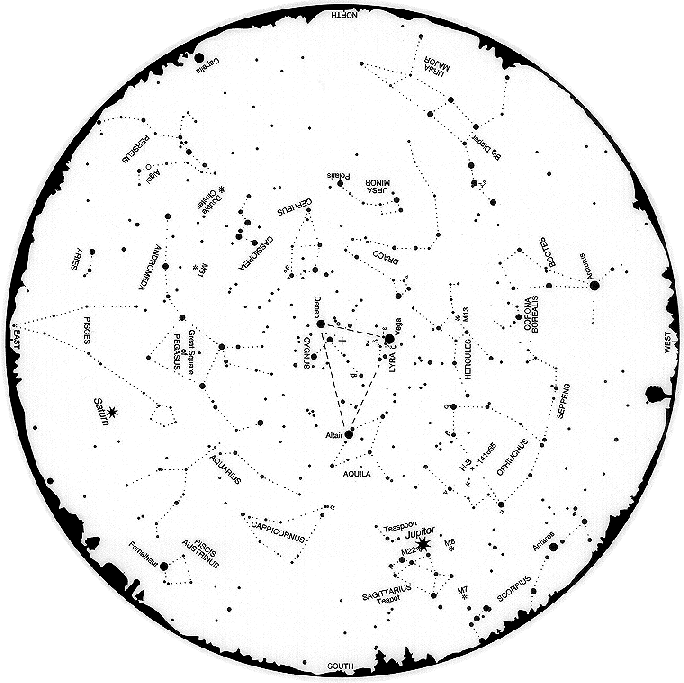- hot
- cold
- dense
- diffuse
- undergoing nuclear reactions
- increases
- decreases
- stays the same
- the energy could change in any of these ways
- Procyon
- Capella
- Pollux
- Vega
- Spica
- 1000
- 3000
- 5000
- 10000
- 12000
- infrared, visible, ultraviolet, radio, microwave
- radio, infrared, visible, ultraviolet, microwave
- visible, radio, microwave, infrared, ultraviolet
- ultraviolet, visible, infrared, microwave, radio
- microwave, radio, ultraviolet, visible, infrared
The atom gains the energy of the photon and an electron jumps to a larger, higher energy orbit. For an electron to jump to a higher energy orbit it must absorb a photon with exactly the right amount of energy equal to the difference between the higher and lower energy orbits. If the photon has enough energy the electron may jump completely out of the atom and leave the atom.
- CCD
- photographic film
- photometer
- spectrograph
- detector
Telescope
- ISP alpha
- ISP beta
- ISP gamma
- ISP delta
- ISP epsilon
Deneb is larger. It has 1000 times more surface area than Castor
Star A
Star B
Explain why you selected this star.
Cool stars have strong Ca lines and weak H lines.
Hot stars (10,000K, type A0) have weak Ca lines and strong H lines
Very Hot stars have weak Ca lines and weak H lines.
(You need to look at both calcium and hydrogen lines.)
Capella
Pressure is produced by colliding particles. The hotter the particles the faster they move and the more and harder the collisions are. The denser the particles, the closer together they are and the more collisions. Both hotter and denser make more pressure.
- Astronomers calculated that the Sun was hot enough in the center to have
nuclear fusion.
- Astronomers discovered that the Sun was composed mostly of hydrogen.
- Since the standard model failed the neutrino test, it must be rejected.
- A new theory does have gravitational contraction as the source for the Sun's energy.
- Gravitational contraction would not supply energy for a long enough time.
- The fusion of hydrogen into helium.
- The fusion of hydrogen into carbon and oxygen.
- The fusion of hydrogen into iron.
- The fusion of helium into carbon and oxygen.
- The fusion of hydrogen and helium.
If the the temperature in the core decreases, the pressure in the core would (decrease) (remain unchanged) (increase). Then the pressure will be (less than) (the same as) (greater than) the gravity. So the core of the star will (contract) (not change) (expand). As a result the temperature in the core will (decrease) (remain unchanged) (increase), and also the insulating ability of the star will (decrease)(remain unchanged) (increase). As a result of this (possible) change in temperature, the rate of energy generation in the core (decrease) (remain unchanged) (increase) and the presure in the core will (decrease) (remain unchanged) (increase). As a result of the (possible) change in insulating ability, the luminosity of the star will (decrease) (remain unchanged) (increase). As a result, the star will come into balance again.
- Helioseismology
- HR diagram of star clusters
- Mass-Luminosity Relation for main-sequence stars
- The core will contract and get hotter, triggering fusion of helium into carbon and oxygen.
- The core will contract and get hotter, triggering fusion of hydrogen to helium in a shell.
- The core will cool off and shrink, then turn into a white dwarf.
- The core will cool off and shrink, triggering a supernova.
- The core will contract and get cooler, and the entire Sun will undergo
gravitational contraction.
- The red giant is probably much older.
- The red giant fuses helium to iron in its core.
- The red giant fuses hydrogen to helium in a shell around its hot helium core.
- The red giant fuses carbon and oxygen in its core to magnesium and silicon.
- The red giant is composed mostly of helium, which increases the
insulating ability and makes it expand.
- a supernova.
- a black hole.
- a neutron star.
- a white dwarf.
- a red giant.
- a supernova.
- a black hole.
- a neutron star.
- a white dwarf.
- a red giant.
The system is 10 parsecs distant from the Sun. One is a main sequence star of type F0 and luminosity of 10 times that of the Sun, and the other is a G2 star with luminosity the same as the Sun. The stars orbit around each other at a speed of 20 km/s, with a period of 3 years at a separation of 3 AUs. Use one of the following formulae:
F = m a
lambdapeak=3x107 / T
P2=a3
m1 + m2 = a3/P2
E = m c2
D=1/p
m1 + m2 = a3/P2
m1 + m2 = 3[AU]3 / 3[yrs]2
m1 + m2 = 27 / 9
m1 + m2 = 3 MSun
- Earth, red giant, Sun, black hole, neutron star
- red giant, Sun, Earth, black hole, neutron star
- black hole, red giant, neutron star, Sun, Earth
- Sun, red giant, Earth, neutron star, black hole
- red giant, Sun, Earth, neutron star, black hole
- Einstein's new equation, E=mc2.
- An understanding that the stability and mass of the Sun requires the interior to be very hot and dense.
- The mass-luminosity relation of the main-sequence stars on a
Hertzsprung-Russell Diagram.
- Radioactive carbon dating of old rocks on the surface of the Earth.
- He used all of these ideas.


- Procyon because it has the smallest mass.
- Fomalhaut
- Castor
- Regulus
- Altair.
Pressure and Gravity
and
Energy Generation and Energy Loss
- electrons.
- photons.
- hydrogen atoms.
- helium atoms.
- all of these.
There were seven stars. However, since several stars were on the edge and difficult to find, we gave extra credit for identifying more than five stars.
